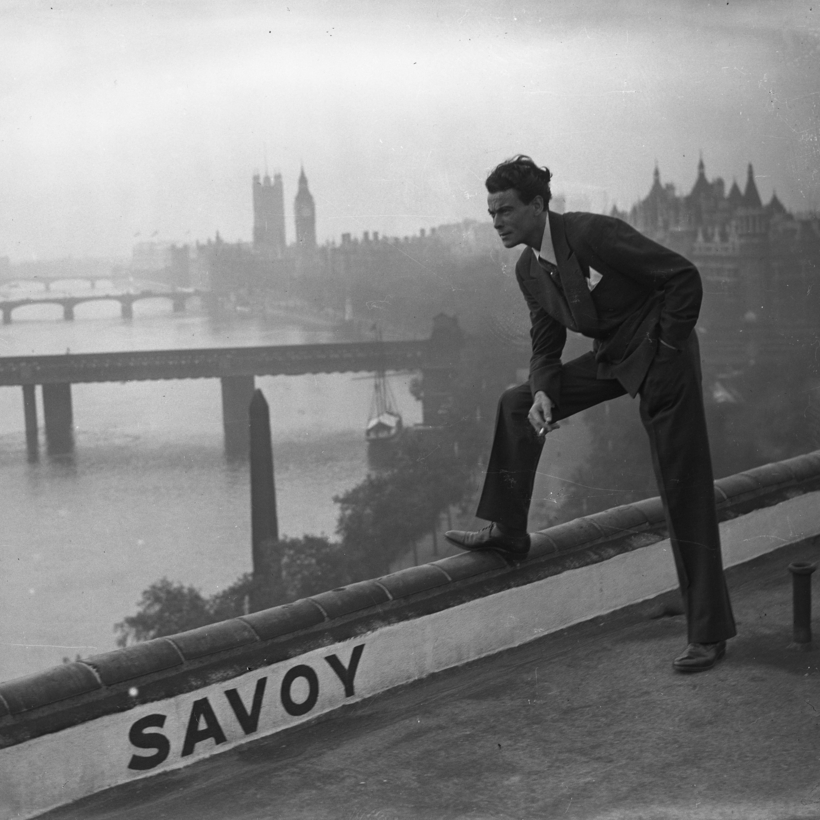When I walk past the Savoy hotel in London, I could think of people of note who stayed there—Presidents Reagan, Truman, Eisenhower, and Harding, plus de Gaulle of France, and Prime Ministers Pierre Trudeau, Winston Churchill, and Margaret Thatcher, just to scratch the surface of dignitaries. Instead, I tend to think of the occupant of rooms 318 and 319: the last of the hotel’s founding family, Bridget D’Oyly Carte.

Divorced after a brief marriage to her cousin at 18, D’Oyly Carte moved into her father’s old hotel suite in 1948, where she lived alone, working every day downstairs in her father’s old office by the kitchens. She was the sole heiress to the hotel as well as to its adjoining Savoy Theatre; its sister hotel, Claridge’s; and the D’Oyly Carte Opera Company, with its exclusive performance rights to the operas of Gilbert and Sullivan. (D’Oyly Carte’s great-grandfather Richard had built the hotel in 1889 to accommodate visitors to his Savoy Theatre.)
D’Oyly Carte was so shy that she would use the stage door to enter the hotel. She threw up from nerves before the opera company’s centenary performance for the Queen at Windsor Castle, and she regularly had her necklaces re-strung, victims of her manic over-twisting.

A few doors down from D’Oyly Carte’s suite was 312, Gregory Peck’s favorite, and directly above it was 412, Humphrey Bogart’s, which had previously belonged to Coco Chanel. Despite her ultra-sociable living quarters, D’Oyly Carte was largely solitary. While the suites around D’Oyly Carte’s were fussed over and renovated, hers was left unmodernized, and she insisted on paying rent—unlike other company directors, who included shipping magnate Stavros Niarchos, businessman Sir James Goldsmith, and lawyer Sir Hartley Shawcross, who was the lead British prosecutor at Nuremberg.
Du Maurier O’Clock
After breakfast in bed with The Times, and putting on her powder and red lipstick in her antiquated bathroom, D’Oyly Carte would go for a stroll around Covent Garden in her fur coat for her first Du Maurier cigarettes of the day—the beginning of her standard 80 before bedtime.

The hotel boardroom was thick with smoke after D’Oyly Carte had been in. Under the table a wastepaper basket was always tactfully positioned by her chair. Into it went the contents of her ashtray, her cigarette boxes, and the elaborate origami creations that she folded from the boxes and then discarded. One castle that she fashioned from the torn packets, with a file-paper moat, was so precise that the person tidying up found it a shame to throw it away.
As a breather away from her office, in the daytime D’Oyly Carte would take breaks up in her room, picking at the broken biscuits that were not good enough for the guests. She was so modest that some of the maids once mistook her for the head of housekeeping—D’Oyly Carte didn’t correct them.
Even in the late evenings in her suite, D’Oyly Carte would remain in her silk shirts and skirt suits, smoking by the window overlooking the Thames. To relax she would read Punch magazine or the works of Carl Jung, and drink whiskey.

In 1953, when she was 45, D’Oyly Carte hired Robert Gibson to direct her opera company. He helmed a revival of Princess Ida at the Savoy Theatre, and it involved the two of them working closely together, spending hours discussing costumes, sets, and casting. No sooner had Gibson headed home for North Carolina than D’Oyly Carte set out for a visit.
The hotel’s managing director Sir Hugh Wontner was panicked enough to fly out there after her, fearing that she was planning to ditch her little empire on the Strand for Gibson. D’Oyly Carte soon returned safe and sound. She never re-married.
Olivia Williams’s The Secret Life of the Savoy: Glamour and Intrigue at the World’s Most Famous Hotel is out now from Pegasus

